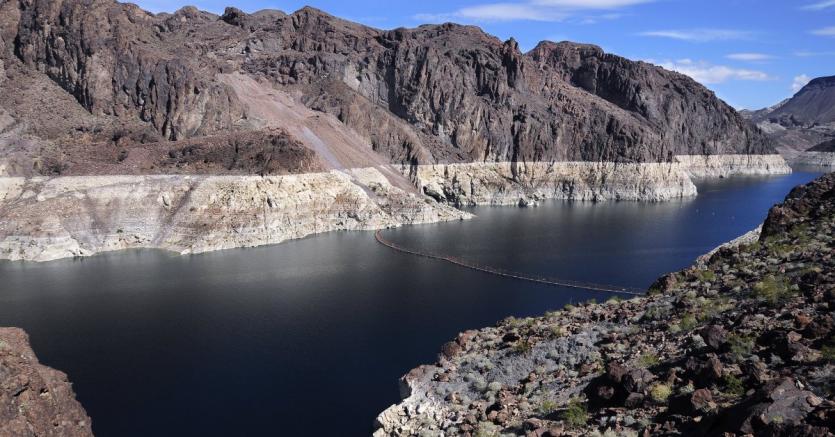A 'bathtub ring' surrounds Lake Mead near Hoover Dam, which impounds the Colorado River at the Arizona-Nevada border, on March 30, 2016. The white ring shows the effects of a drought which has caused the level of the lake to drop to an historic low. Photo:Getty
By Patryk Krych | The World Daily | JUNE 10th 2021
With a severe drought currently burning through the Western United States, the results of the crisis are beginning to show more clearly, with the reservoir at Hoover Dam having shrunk to its lowest level ever recorded.
Pressure is being applied to the region’s supplies of drinking water, as well as the electricity capacity of the dam. Lake Mead, the reservoir formed by the presence of the dam, is currently at a historic low that is expected to sink even lower yet.
According to Bureau of Reclamation spokeswoman Patricia Aaron, the level of Lake Mead’s waters are expected to sink to the lowest they’ve been since the original construction of the dam back in 1931, by the time Thursday comes.
“Lake Mead will most likely hit elevation 1,071.61 (feet) on Thursday, June 10. That will match the previous lowest elevation on record since the 1930s,” said Aaron. “We anticipate the elevation of Lake Mead to continue to decline until November 2021.”
The observed drought conditions that are prominent in the Western United States at the moment have been cause for panic among forecasters, who anticipate a new batch of fires will be breaking out across forests, as well as the continued drying of lakes and rivers, aside from the Hoover Dam reservoir.
“Climate change is clearly playing a role, as recent years have all been among the hottest in history. The warmer temperatures are driving that vicious cycle, and making it harder for normal or even above average rainfall years to make a dent in the drought,” said CNN meteorologist Brandon Miller.
He added: “When one or two below average rainfall/snowfall years occur, as we have just seen, the results are disastrous.”
Lake Mead is recognised as the largest reservoir in the entirety of the US, making it not only a symbol of American innovation from the 20th century, but also an important tourist and historical site. It’s also important to the provision of clean drinking water to over 25 million people, supplied around Las Vegas, Los Angeles, Phoenix, Tucson and San Diego.
Its previous record low had been set back in July of 2016, when the Western US had been gripped by previous drought. Overall, the waters have fallen a total of 42.7 meters (140 feet) since the year 2000. The conditions that brought about this drought are being felt all around the region and those that surround it.






